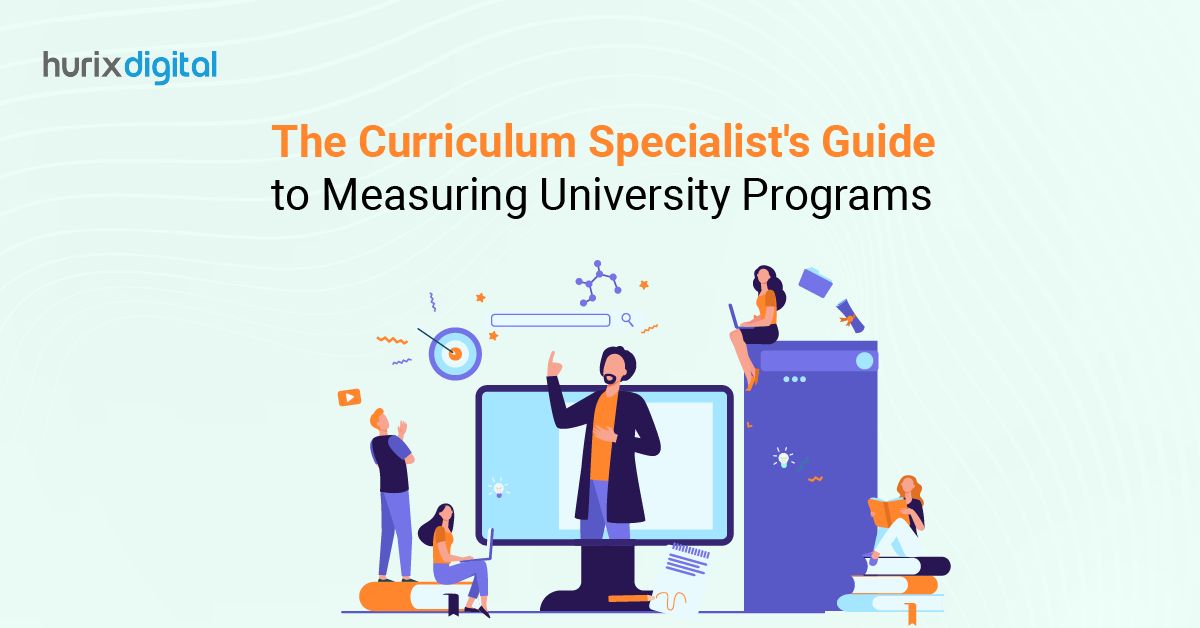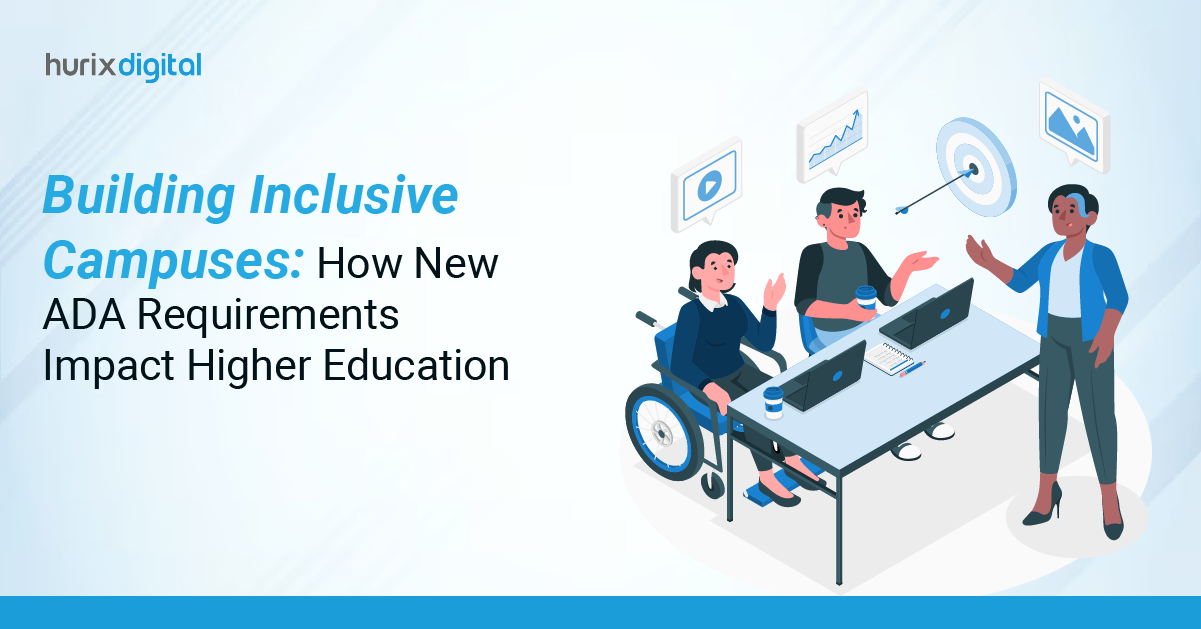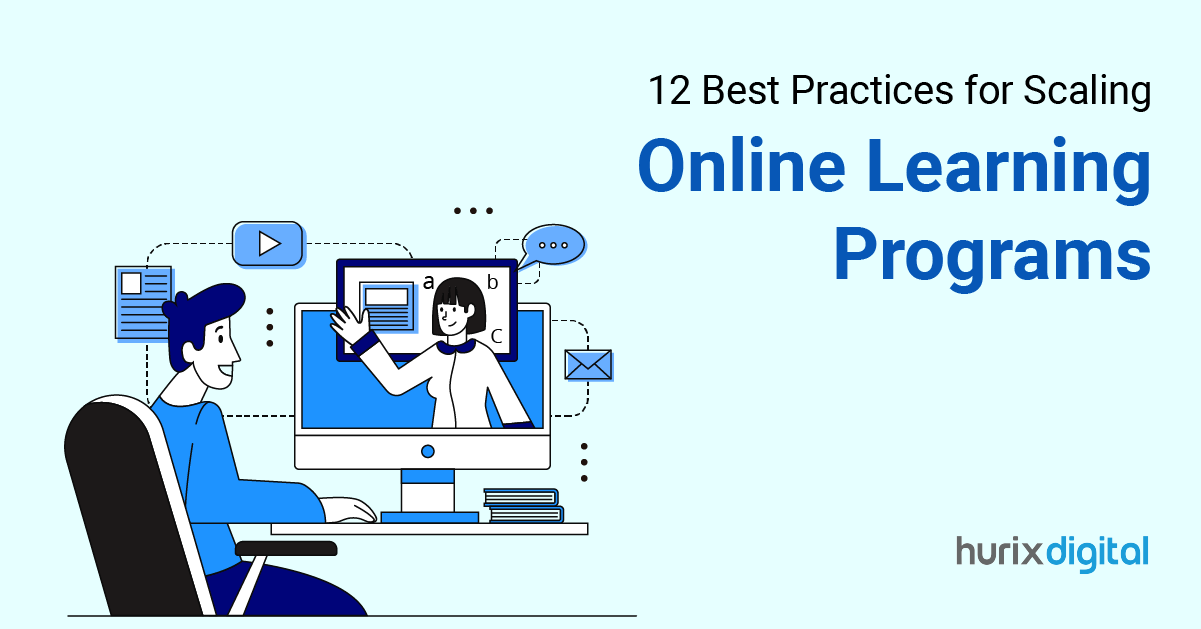
The Curriculum Specialist’s Guide to Measuring University Programs
Summary
This blog explores how curriculum specialists help institutions enhance curriculum efficacy using data-driven decisions, focusing on key methods, best practices, and trends to boost student achievement.
As a provost, you know that ensuring academic excellence involves more than delivering content. It’s about carefully designing programs that promote student achievement. But how can you determine whether your curriculum is hitting the mark?
Here’s when a curriculum specialist comes to the rescue. They bring essential insights through data-driven decision-making. Using educational data, they can refine curriculum structure and ensure it supports institutional goals.
Let’s examine how curriculum experts assist academic institutions like yours in evaluating the curriculum’s efficacy and improving student performance.
Table of Contents:
- The Curriculum Specialist’s Approach: Key Areas of Focus
- Why Data-Driven Decision-Making Is Essential in Curriculum Measurement
- Core Methods for Measuring Curriculum Effectiveness
- Best Practices for Implementing Effective Curriculum Evaluation
- Emerging Trends in Curriculum Evaluation
- Wrapping Up
The Curriculum Specialist’s Approach: Key Areas of Focus
For curriculum specialists, effectiveness assessment involves more than students passing standardized tests. Instead, these assessments are integrated throughout a curriculum’s life cycle.
The specialists are engaged at all stages: conceptualization, implementation, and evaluation. Here’s how they approach their role:
- Identifying Core Objectives: Each program has specific outcomes tied to the institution’s broader mission. Curriculum specialists ensure each course contributes to these outcomes by working with teachers to establish quantifiable goals.
- Data Collection and Analysis: Specialists use educational data mining to collect data on student performance and completion rates and analyze this data to identify strengths and areas for improvement.
- Faculty Collaboration: Curriculum specialists advise teachers on improving course material and matching instructional strategies to learning objectives. They also help the faculty address knowledge gaps that exist during curriculum implementation.
- Ongoing Curriculum Adjustments: Education is dynamic. Specialists regularly modify curriculum elements based on student input and technological developments.
Also Read: Budgeting for AI – Cost Considerations for Educational Technology Leaders
Why Data-Driven Decision-Making Is Essential in Curriculum Measurement
Data is key to curricular efficacy. Universities may adjust and react to shifting academic and industry landscapes through data-driven decision-making.
By analyzing performance data, curriculum specialists can uncover insights that drive effective improvements, benefiting students and institutions. Here’s why this approach is indispensable:
1. Precision in Assessing Learning Outcomes
With access to student performance data, curriculum specialists pinpoint whether students are achieving the desired competencies. Here’s how:
- Grade Trends: Analyzing grades across courses and departments reveals which curriculum areas consistently meet objectives and which need reinforcement.
- Standardized Test Scores: Tracking standardized test results offers benchmarks to compare student proficiency against external standards, highlighting curriculum effectiveness.
2. Enhanced Responsiveness to Industry Trends
In a world where industries constantly evolve, the ability to adapt curricula to emerging needs is critical. Curriculum specialists modify programs by monitoring job market data and skill requirements to better equip students for the real world.
- Skills Gap Analysis: By comparing curriculum outcomes with industry expectations, universities identify essential skills that should be emphasized in course content.
- Alumni Performance: Monitoring alum success rates in the workforce provides real-world evidence of curriculum relevance, helping institutions stay competitive.
Core Methods for Measuring Curriculum Effectiveness
There are multiple methods that a curriculum specialist employs to gauge curriculum success accurately. Here’s a breakdown of key approaches:
1. Learning Analytics and Educational Data Mining
Using learning analytics, curriculum specialists can monitor how students learn and interact with the course material. It reveals certain patterns or trends that could influence learning results. Techniques include:
- Behavioral Analysis: Login frequency and time spent on the tasks help trace the student engagement level.
- Predictive Analytics: Specialists can use predictive models to foresee which students might struggle. This enables timely intervention.
- Real-Time Feedback Loops: This allows instant curriculum tweaks based on student feedback and enhances the learning experience as the course progresses.
2. Student Assessments Beyond Standardized Testing
Standardized testing is important but should not be the only measure of achievement. Alternative assessments will enable a much broader view of the curriculum impact:
- Project-Based Assessments: These tests promote the use of knowledge in practical contexts and critical thinking.
- Competency-Based Evaluations: Such evaluations concentrate on acquiring particular skills instead of getting good grades to ensure students meet set standards.
3. Longitudinal Data Collection
Monitoring students over time offers a thorough understanding of the curriculum’s long-term effects. Using longitudinal data collection, curriculum experts can assess the following:
- Course Progress: Tracking student retention rates and progression trends helps determine whether the program encourages sustainable learning.
- Post-Graduation Success Metrics: Analyzing metrics like job placement rates and further education engagement offers insight into the curriculum’s real-world value.
Best Practices for Implementing Effective Curriculum Evaluation
Here are the best practices to maintain an efficient and effective evaluation framework:
- Establish Unambiguous Key Performance Indicators (KPIs): Decide on specific success criteria, like exam scores and job placements. This facilitates progress tracking.
- Create a Balanced Assessment System: It is important for good practice, to implement both formative assessment (to give regular feedback) and summative assessment (to give evaluation at the end of the course) for effective learning.
- Perform Regular Curriculum Audits: Curriculum review ensures that the course content and teaching strategies are current with industry standards and academic expectations. Frequent reviews by curriculum experts prevent the changes from taking too long to effect.
- Engage All Stakeholders in the Process: Faculty members, students, and employers take part in curriculum assessment, enhancing its effectiveness by broadening its scope.
- Integrate Technology in Evaluation: From online assessment tools to AI-driven analytics platforms, technology can simplify and enhance the evaluation process.
Emerging Trends in Curriculum Evaluation
To stay competitive, universities and curriculum specialists must adopt cutting-edge tools and trends that align with the modern educational landscape. Here are the latest innovations shaping curriculum evaluation:
1. Adaptive Learning Technologies
Adaptive learning utilizes AI to adjust content and resources according to each student’s learning pace and style. This makes evaluations more accurate and personalized.
- Customized Learning Pathways: AI creates tailored pathways for students, optimizing their learning experience based on real-time performance data.
- Enhanced Student Engagement: Adaptive technologies can boost engagement and retention rates by focusing on individual progress.
2. Competency-Based Education
CBE (competency-based education) is one way of assessing students in class. In this approach, a learner is considered to be a master of specific skills, knowledge, and content instead of class attendance. It is an approach to curriculum evaluation that focuses more on the end results, leading to better outcomes than higher learning for those lacking formal education.
- Objective-Driven Progress: Students move forward only when they demonstrate competence, ensuring skills mastery across all curriculum elements.
- Alignment with Workforce Needs: CBE links educational objectives to real-world skills, creating more industry-ready graduates.
3. Blockchain Technology in Education
Blockchain provides a secure, transparent method for tracking and recording academic achievements, which can help ensure curriculum accountability.
- Immutable Records: Students’ achievements are securely stored, reducing fraud and providing clear evidence of curriculum impact.
- Global Recognition: Blockchain technology enables institutions to verify student competencies globally, aligning with international educational standards.
Also Read: WCAG 508 Compliance for eLearning Platforms: Best Practices for Higher Education
Wrapping Up
The tools and methods for measuring curriculum effectiveness are continuously changing. While rapid technological leaps are partly responsible for this, universities are also increasingly adopting flexible, student-centered models where skill development and lifetime learning are emphasized more than just attaining good grades in standardized tests.
Even though curriculum development is no easy task, with Hurix Digital, it’s seamless.
Hurix Digital offers innovative higher education solutions that make curriculum design efficient and technologically advanced. Our digital learning platform has tools for real-time curriculum evaluation and data insights to empower universities to stay competitive and meet evolving educational standards.
Looking for a way to elevate your institution’s curriculum effectiveness?
Connect with us to explore how our solutions can create an impactful, future-ready curriculum.

Senior Vice President
A Business Development professional with >20 years of experience with strong capability to sell new solutions and develop new markets from scratch. New Market Entry Specialist with experience of working in two of the largest emerging markets – China & India. Also covered other key markets in APAC, US, EU & ME. Exceptional experience of conceptualizing, ideating and selling new learning technologies like VR AR, etc. across multiple industry verticals.








